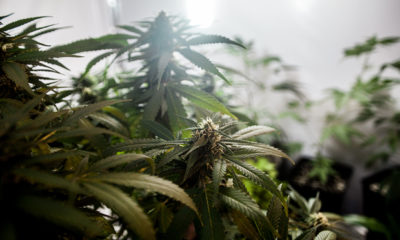
Economics
Is Uncle Sam’s $3 Million CBD Exploration Just Another Scam?
Government research grants will not study whole-plant marijuana.
The federal government is finally ready to roll up its sleeves and examine the cannabis plant to determine whether it has any therapeutic benefits. The only problem is that weed has become such a modern-day Frankenstein monster — one that has been sprawled out on a rack of consumerism and dissected in the quest to separate the evils of nature and those sent here to do good — that the weight of the research really only stands to explore the medicinal powers of one specific part. It seems that Uncle Sam is curious about the CBD craze, and is planning to shell out a few million bucks to see if this cannabinoid really lives up to the hype as an effective pain remedy. But wouldn’t you know it, in true bureaucratic fashion, the feds are still refusing to look into THC.
Last week, nine federal research grants were approved designed to finally put CBD under the microscope once and for all. The goal, or so they want us to believe, is to see if this non-intoxicating component of the cannabis plant is indeed a useful source for snuffing out pain conditions. It’s what the American population wants, after all. A recent study from the American Society of Anesthesiologists (ASA) finds that 75% of the nation is interested in learning whether there is any validity to medical marijuana’s effectiveness in taming pain. So the feds have stepped up to give the country what it has been asking for. Only not really, as the $3 million they have allotted for this round of research isn’t going to be spent on whole-plant marijuana.
Incredibly, the federal government is still baffled and confused when it comes to medical cannabis. Not only does it consider the plant one of the most dangerous drugs in the world, the contention among the grey-hairs in the driver’s seat is that it also has absolutely no medicinal use. That’s funny, considering there are only three states in the country that haven’t legalized the leaf for medicinal purposes. And people are using marijuana to help with chronic pain in those places where it is considered a legitimate health condition. So, sure, we’d say it’s about time that science be allowed to get to the bottom of whether pot really works for this condition.
“The science is lagging behind the public use and interest. We’re doing our best to catch up here,” Dr. David Shurtleff, deputy director of the National Center for Complementary and Integrative Health, told the Associated Press.
But the restrictive nature of these studies is in no way going to catch up with more than eight decades of prohibition. Not even close. It has already gotten off on the wrong foot since those responsible for footing the bill for the research remain convinced that the stoner component THC is just too damn dangerous to be considered medicine. And it is this threat of addiction and abuse that makes THC worthless in the grand scheme of controlling pain. Shurtleff is convinced of that, wholeheartedly.
The federal government wants a doe-eyed America to think that it is doing everything in its power to prevent another drug-addicted mess like the opioid crisis from bearing down on the population. Meanwhile, it continues to approve pharmaceutical drugs more frightening than any Frankenstein we ever saw.
There is a distinct possibility that the federal government’s latest journey into cannabis science is just a huge setup. Those in the know are fully aware that it is mostly the combined efforts of CBD and THC that provide the best results when it comes to pain. In fact, some of the latest research out of the University of Mexico finds that “higher tetrahydrocannabinol (THC) levels were the strongest predictors of analgesia and side effects prevalence across the five pain categories.” In other words, the more THC in that weed you’re smoking, the better it will be at alleviating pain.
Therefore, to eliminate THC from the equation in the quest to determine if medical marijuana is effective for pain relief is just another half-*ssed approach to studying this plant. The outcome, regardless of how the results play out, isn’t going to provide anyone with a clear view on the subject of using cannabis for pain management. At best, we suspect millions of dollars will be spent on providing the government with more of an argument against clearing the herb for this application.
TELL US, do you think the government should also research THC?
























